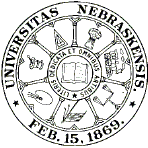
University Studies (University of Nebraska) (1888–1984)
Date of this Version
3-1966
Citation
University of Nebraska Studies: New Series no. 32
Abstract
"GOOD NEWS FOR TAXPAYERS." "State Can Earn Still More Interest." "State To Reinvest For 4%% Interest-5Y2 Million To Draw Highest Return Ever." "Iowa Invests Record 207 Million in Interest-Bearing Securities-Puts Surplus Money to Work, but Cautiously." These are typical captions selected from newspaper articles and editorials which have appeared in the past few years. They may attract attention to surface matters but such reports miss the real significance of recent developments in the alert financial management of state funds.
PURPOSE OF THIS RESEARCH
There are many sources of funds for a government. Taxes, licenses, and fees of various kinds constitute the major portion of this inflow of funds.
When it has been considered necessary as a part of the flow that these funds be invested, this usually has been done by the local officer, possibly with the assistance of an advisory group, and within a very limited choice of investment forms.
A New Element
The new dimension is an increasing recognition that many funds, such as permanent or trust funds, flow to a government solely to be invested; other funds, such as pension and retirement funds, require investment because of inherent characteristics; and stilI other funds, such as current operating balances, can be utilized in a more fully developed program. The indication is that the larger cash flows are not frequently employed. They require professional attention and a widening of the area of permitted investments.
A few states have pioneered with the idea of a state centralized investment process encompassing controls on all cash flows and wide investment discretion in the hands of professionally trained investment personnel. The basic purpose of this research is a close examination of trends and a presentation of the distinctive structure, controls, and operations of these more sophisticated state investment programs.


Comments
Published by The University at Lincoln